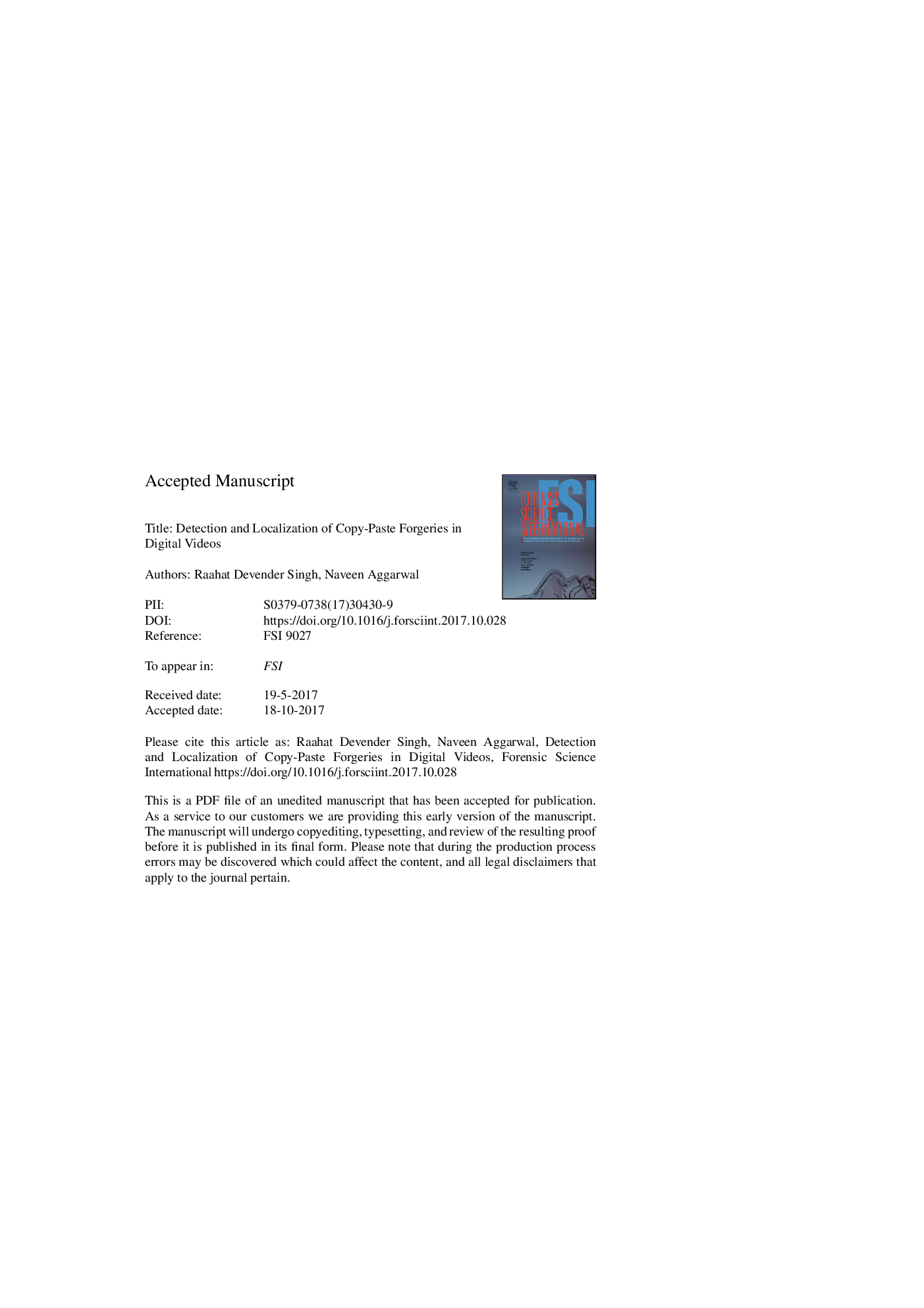| Article ID | Journal | Published Year | Pages | File Type |
|---|---|---|---|---|
| 6551425 | Forensic Science International | 2017 | 32 Pages |
Abstract
Digital videos can suffer from several kinds of manipulations, but perhaps, one of the most consequential forgeries is copy-paste forgery, which involves insertion/removal of objects into/from video frames. Copy-paste forgeries alter the information presented by the video scene, which has a direct effect on our basic understanding of what that scene represents, and so, from a forensic standpoint, the challenge of detecting such forgeries is especially significant. In this paper, we propose a sensor pattern noise based copy-paste detection scheme, which is an improved and forensically stronger version of an existing noise-residue based technique. We also study a demosaicing artifact based image forensic scheme to estimate the extent of its viability in the domain of video forensics. Furthermore, we suggest a simplistic clustering technique for the detection of copy-paste forgeries, and determine if it possess the capabilities desired of a viable and efficacious video forensic scheme. Finally, we validate these schemes on a set of realistically tampered MJPEG, MPEG-2, MPEG-4, and H.264/AVC encoded videos in a diverse experimental set-up by varying the strength of post-production re-compressions and transcodings, bitrates, and sizes of the tampered regions. Such an experimental set-up is representative of a neutral testing platform and simulates a real-world forgery scenario where the forensic investigator has no control over any of the variable parameters of the tampering process. When tested in such an experimental set-up, the four forensic schemes achieved varying levels of detection accuracies and exhibited different scopes of applicabilities. For videos compressed using QFs in the range 70-100, the existing noise residue based technique generated average detection accuracy in the range 64.5%-82.0%, while the proposed sensor pattern noise based scheme generated average accuracy in the range 89.9%-98.7%. For the aforementioned range of QFs, average accuracy rates achieved by the suggested clustering technique and the demosaicing artifact based approach were in the range 79.1%-90.1% and 83.2%-93.3%, respectively.
Keywords
Related Topics
Physical Sciences and Engineering
Chemistry
Analytical Chemistry
Authors
Raahat Devender Singh, Naveen Aggarwal,
